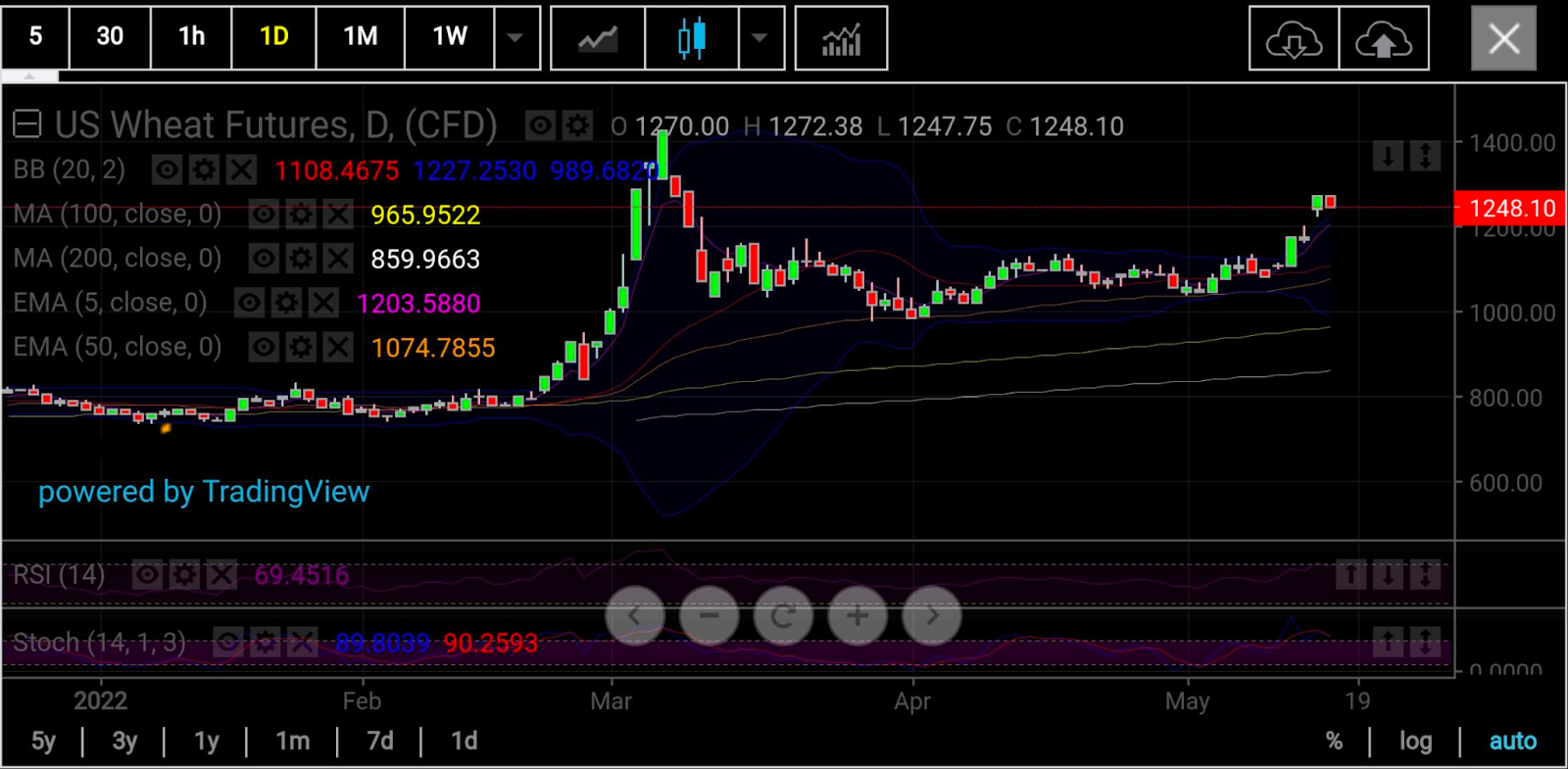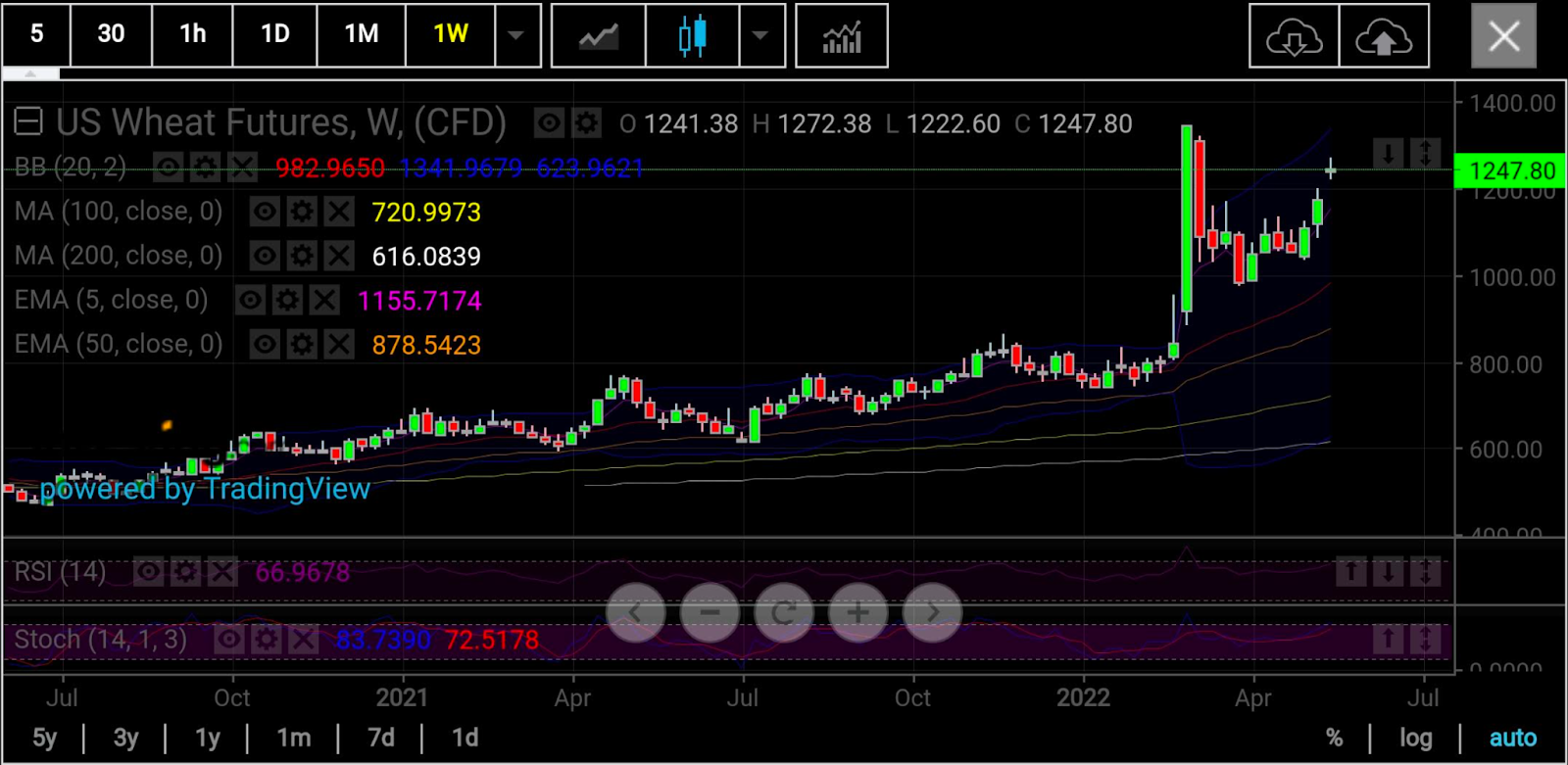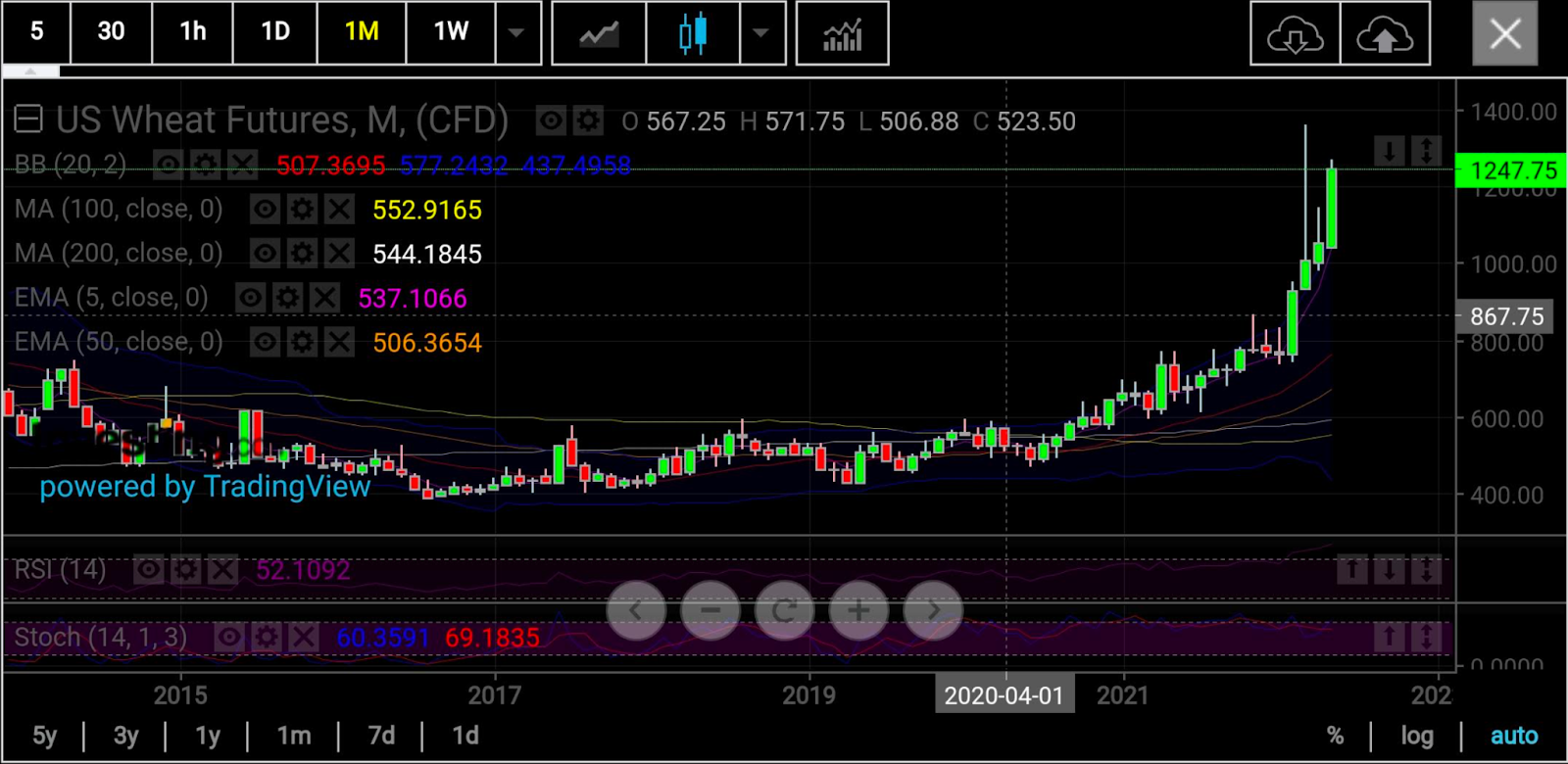Commodity bulls vexed at times by oil's volatility may have a friendlier one-way trade now that’s likely to last for a while: wheat.
The grain, which rose by its daily limit in Chicago trading on Monday—in response to the export ban announced by India on Friday to most countries—looks likely to hit record highs above $13 a bushel soon, based both on the fundamentals of supply-demand and chart action.
And wheat’s upside could last a while, with prices seen sticky in the upper $12 range, leading up to over $15, according to technicals.

All charts courtesy of skcharting.com
US wheat futures already hit record highs of $13.40 a bushel on Mar. 4, after the Feb. 24 invasion of Ukraine by Russia upended the global market for the grain. Prior to that, Russia and Ukraine used to jointly supply nearly 30% of the world's wheat from vast and fertile farmlands in the Black Sea region known as the “breadbasket of the world.”
Despite the supply deficit, Chicago wheat fell below $10 a bushel by Apr. 4—exactly a month after its record high—on signs of some relief in shipments from the Black Sea despite the Ukraine war.
India’s ban put the market on a different trajectory. The embargo was announced as heatwaves decimated the wheat crop in the world’s second-largest grower, which produced 107.59 million tonnes in 2020. That’s individually more than the 85.9 million tonnes produced by Russia and the 24.9 million produced by Ukraine that year, although the two “breadbasket” nations cumulatively commanded 110.8 million tonnes of world supply, versus the 134.25 million from China.
India targeted to export a record 10 million tons of wheat in 2022-23 after importing nations looked to New Delhi to fill in the gap following Russia's war on Ukraine. But as record-shattering heatwaves sent temperatures above 50°C (122°F), damaging wheat yields across India, the government was forced to reconsider its position.
India’s Directorate General of Foreign Trade, however, made a concession on Monday—that exports would still be allowed for countries that require wheat for food security. All other new shipments would be banned, it said.
“The new ban puts an additional strain on the world export market, considering that India was expected to be an alternative to Russia and Ukraine amid the ongoing war there,” said Jack Scoville, chief crop analyst at the Price Futures Group in Chicago.
In Monday’s session, soft red winter wheat futures on the Chicago Board of Trade hit the daily 70-cent trading limit cap to settle at $12.47. The trading limit will go up by 35 cents, to $1.05 from Tuesday onwards, the CME Group, which runs the Chicago exchange, said.
Year-to-date, Chicago wheat is up 62%, turning everything made from the produce, including bread, cakes, and noodles, costlier as US inflation runs at 40-year highs.

Charts indicate that $15.50 could be an extended high for Chicago wheat, said Sunil Kumar Dixit, chief technical strategist at skcharting.com.
“Strength above $12 can ease the advance into $12.80 and retest the $13.40 record high,” Dixit said.
“A base building above the $13.00 - $13.40 supply zone can put wheat futures on a higher target range of $14.50 - $15.50 over an extended period of time.”
“Overall broader outlook is very bullish and we see a strong case for a new high in a few weeks,” he adds.

Yet, for any reason the market retreats below $11, a precipitous drop could follow, Dixit warns.
“Projections come with a caveat that breaking below $11.00 can put wheat prices at the risk of the 50-Day Exponential Moving Average of $10.75, and the 100-Day Simple Moving Average of $9.65,” he said.
To avoid a break in the uptrend, Dixit said wheat prices need to stay firmly above $12.
“Weakness below $12 can push wheat down to $11.50, while breaking below $11 will raise the red flag for the invalidation of the current bullish breakout.”
Disclaimer: Barani Krishnan uses a range of views outside his own to bring diversity to his analysis of any market. For neutrality, he sometimes presents contrarian views and market variables. He does not hold a position in the commodities and securities he writes about.
